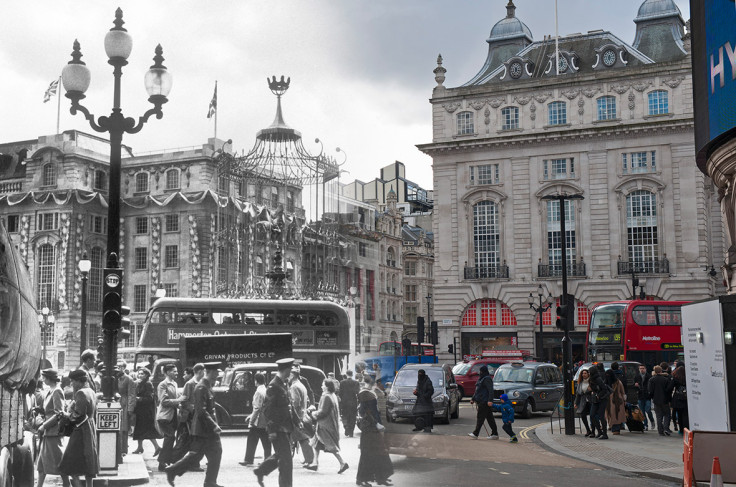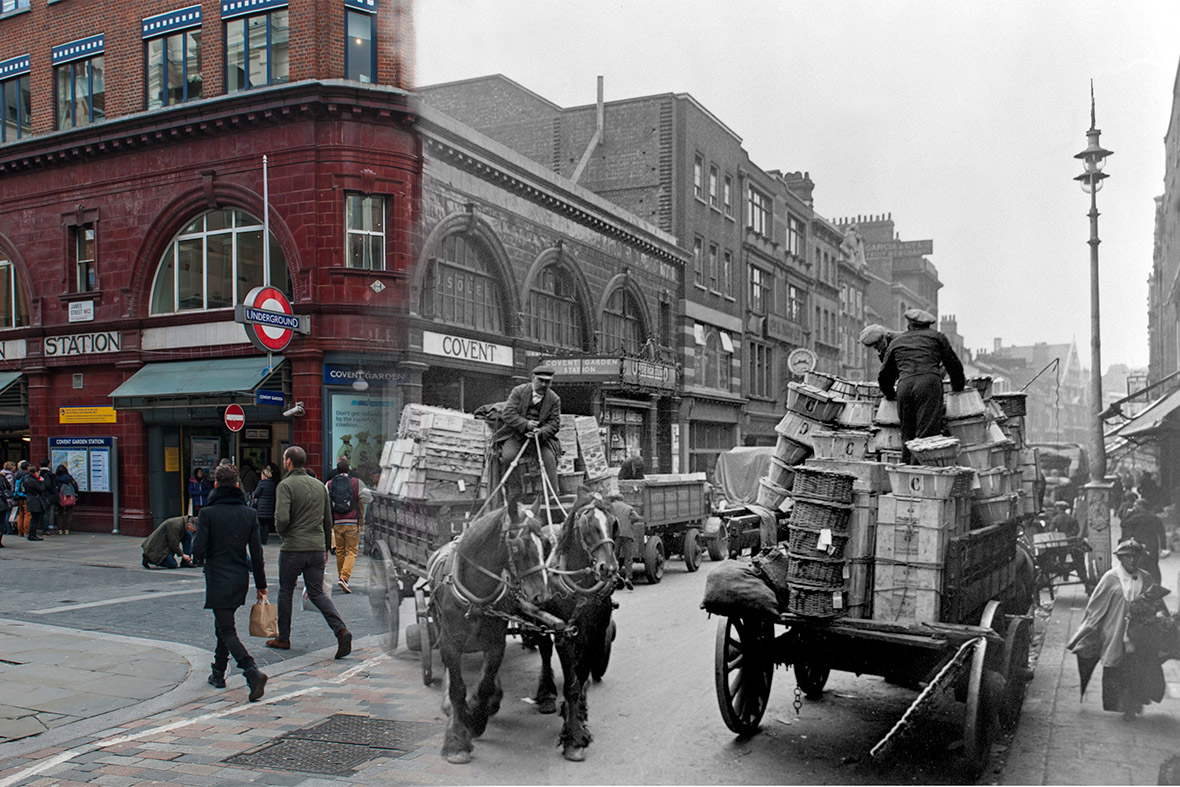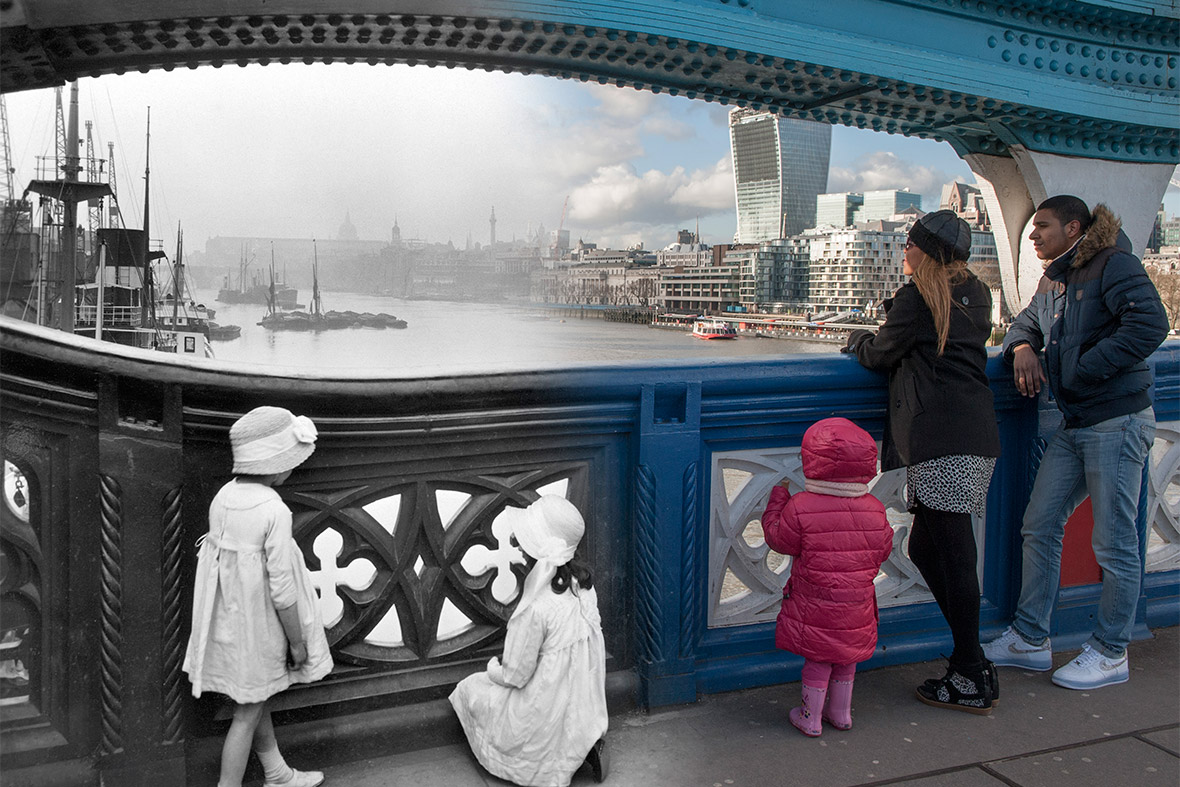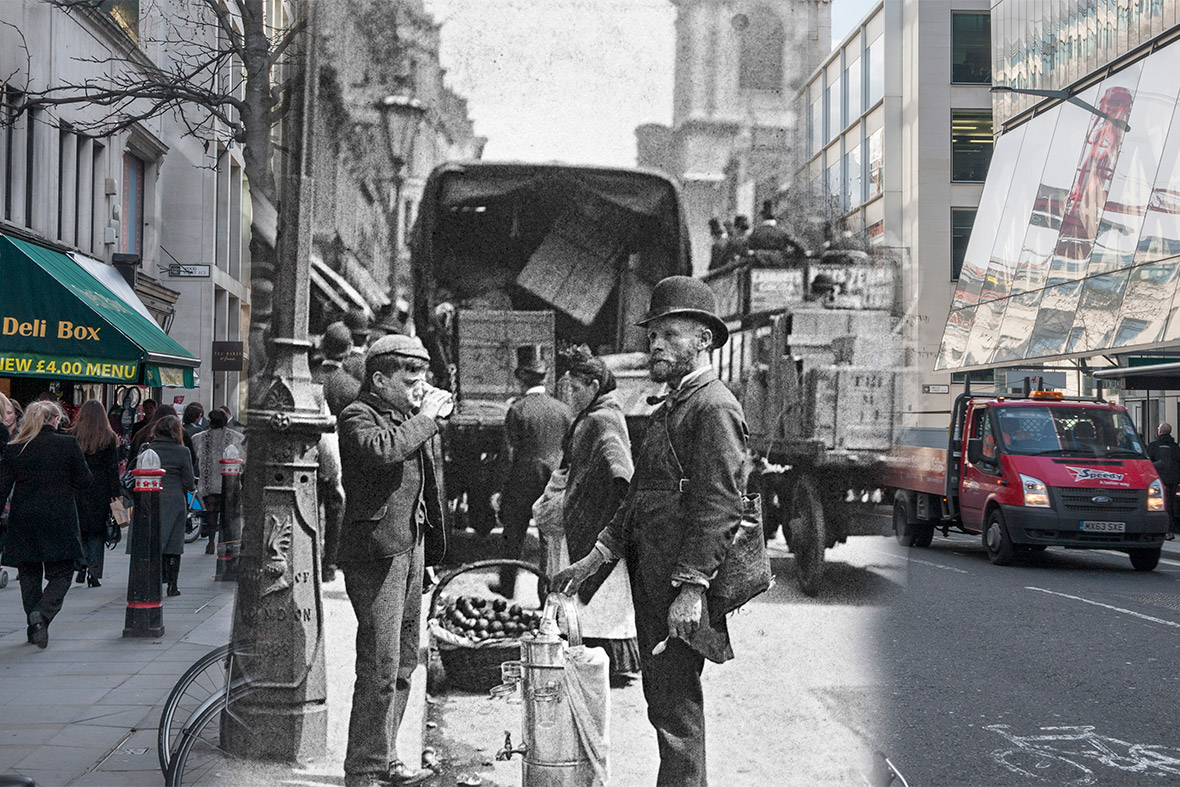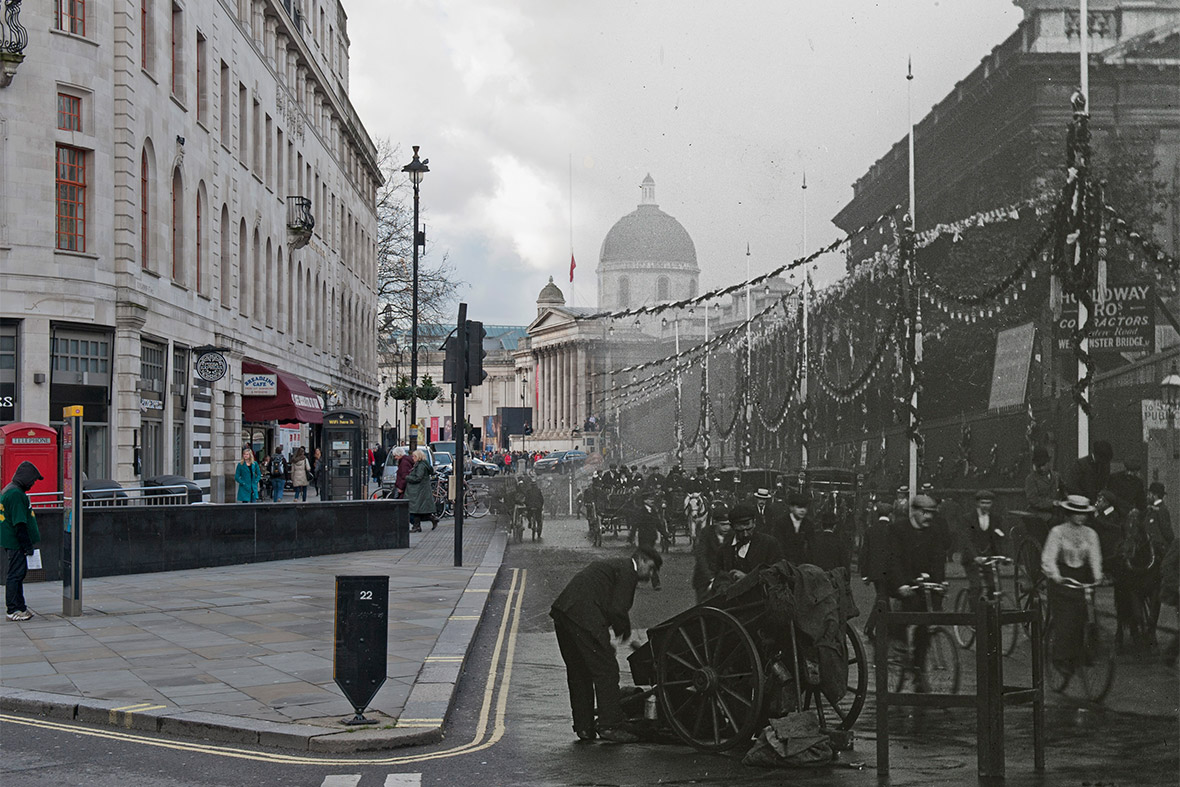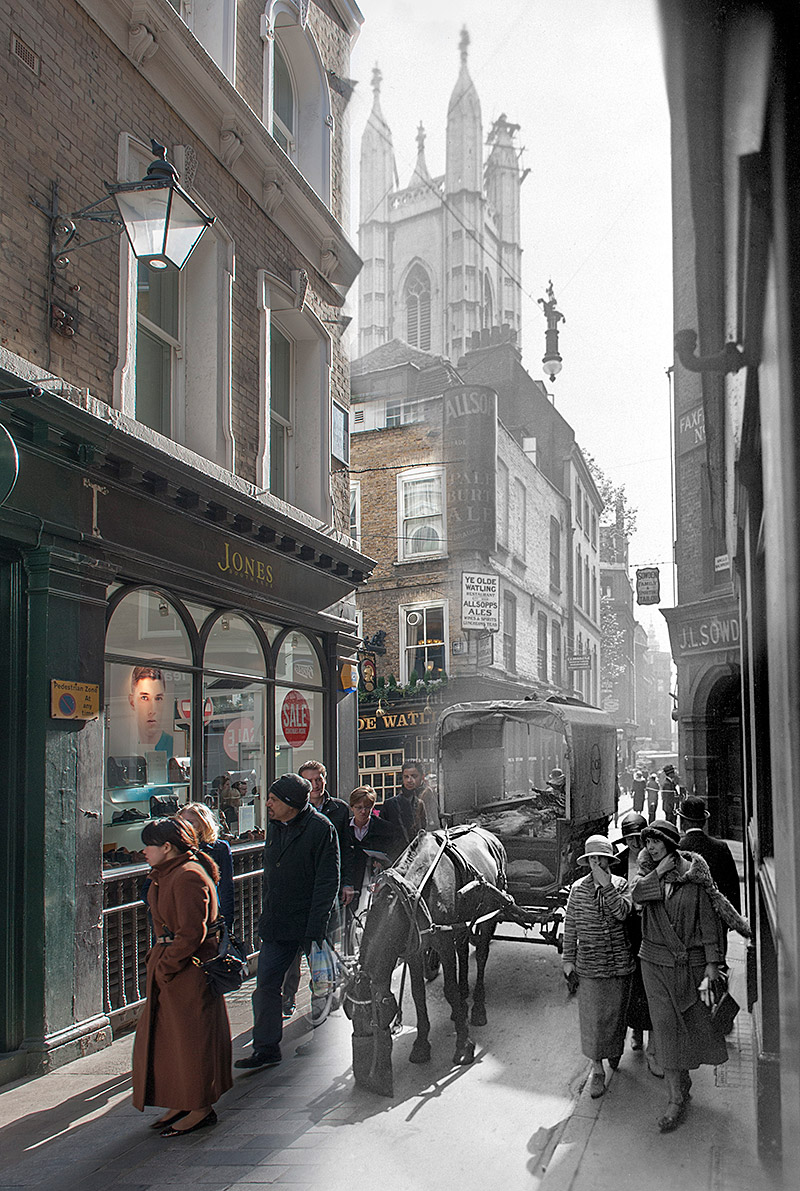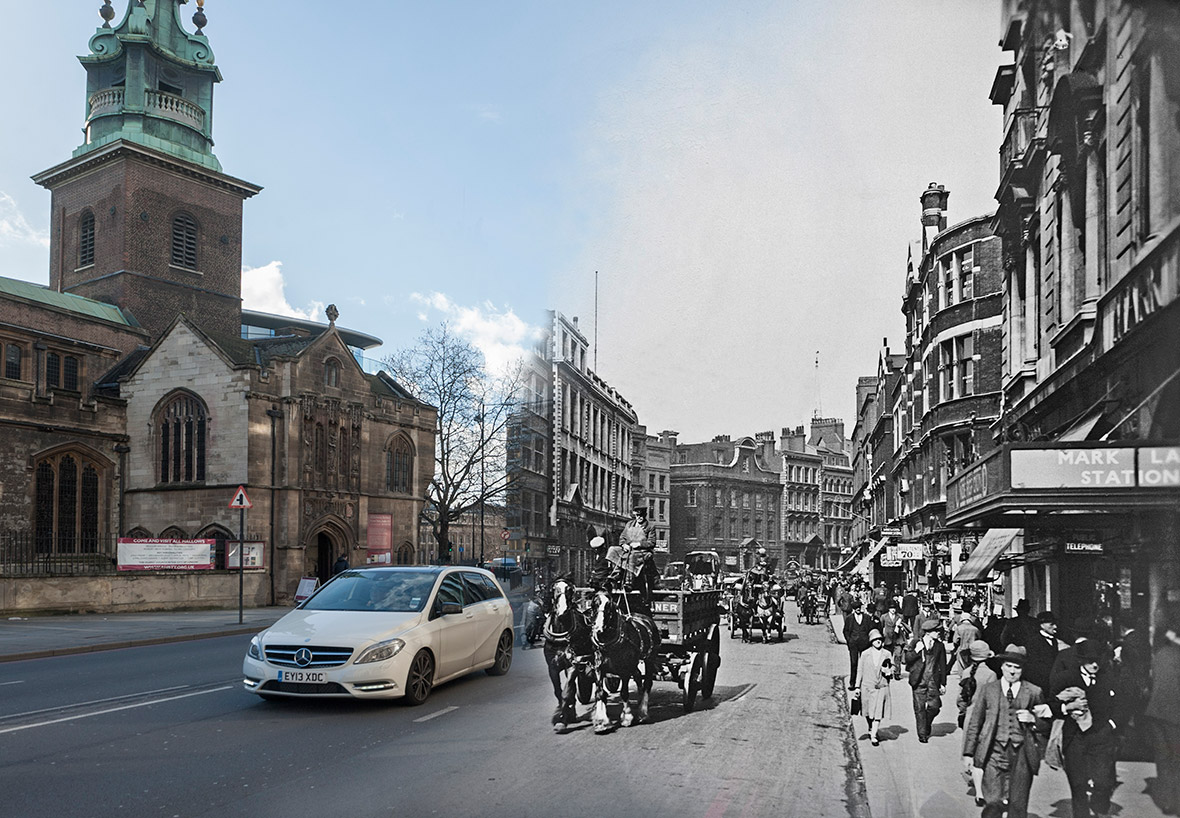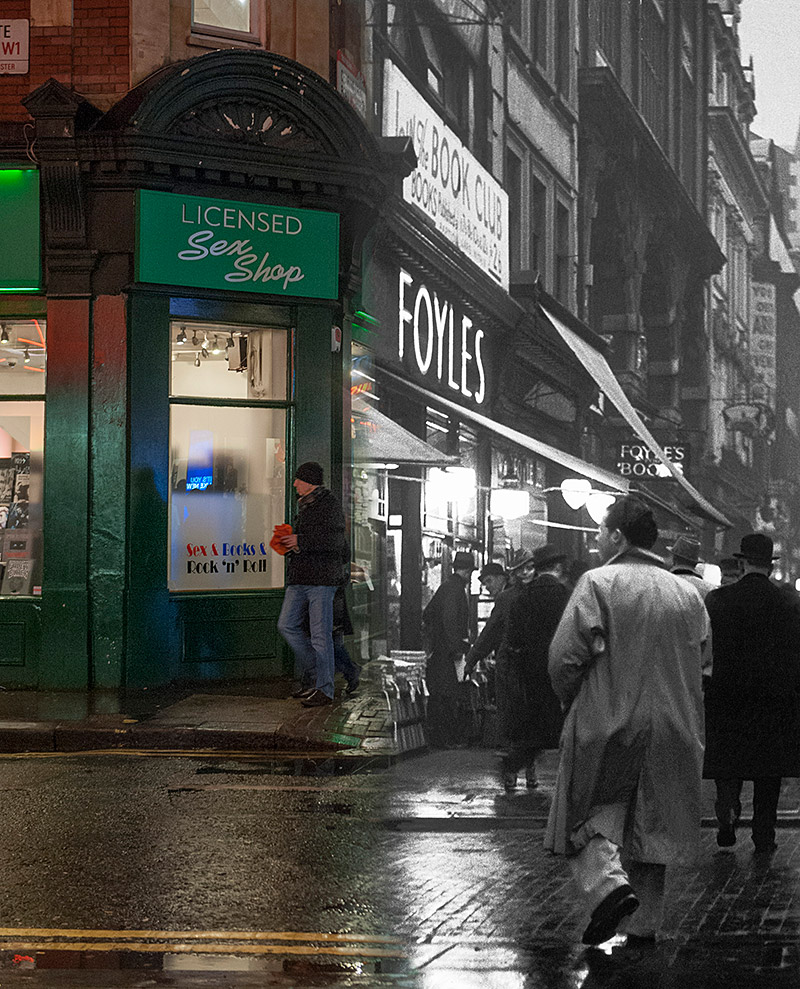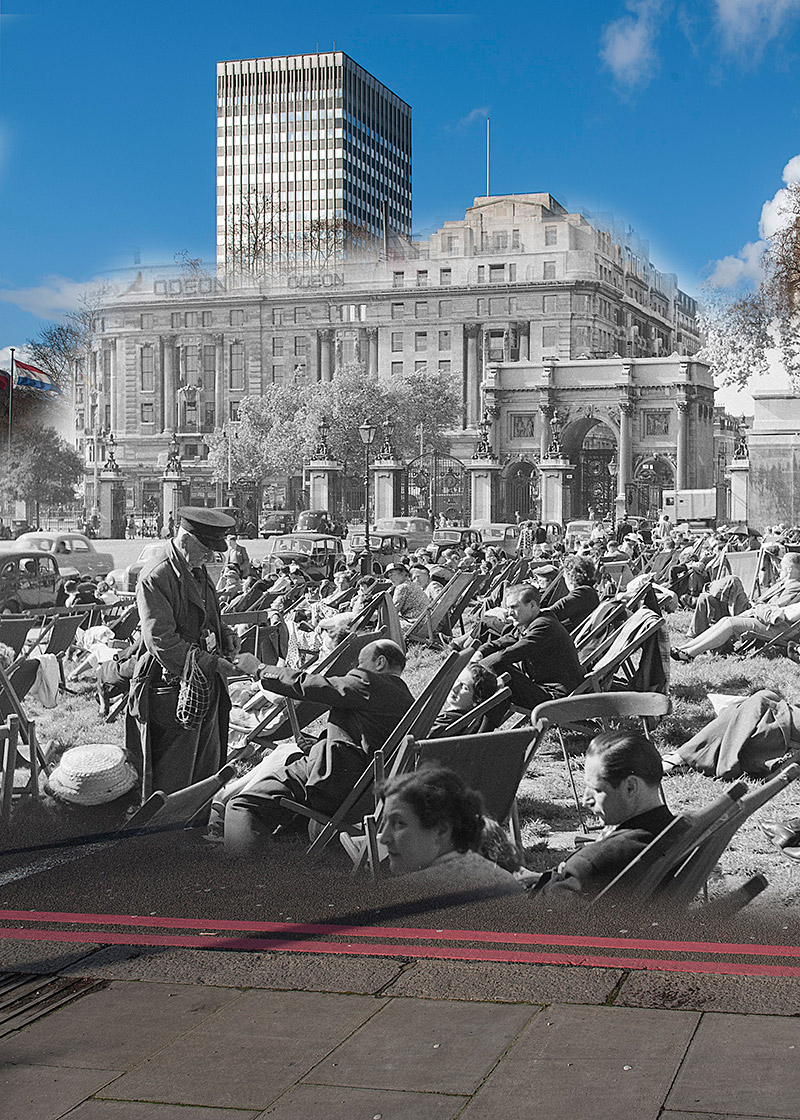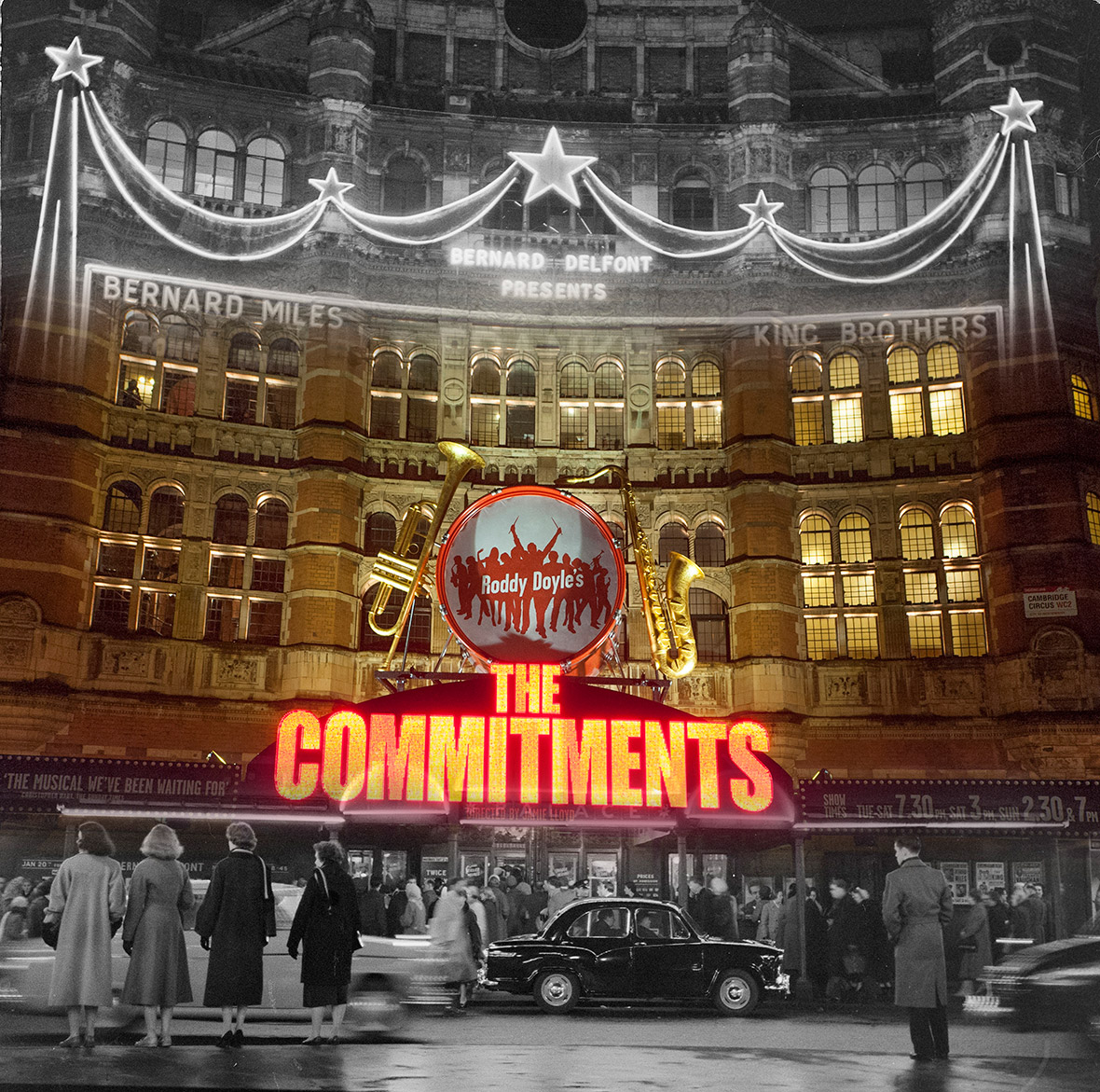The Museum of London has released ghostly historic images of London juxtaposed with what they look like today, to promote its Streetmuseum app. The award-winning iPhone app has been updated with over 100 new locations and images, dating as far back as 1868.
Piccadilly Circus; June 1953. Photographer: Wolfgang Suschitzky. Piccadilly Circus on Coronation Day, 2 June 1953. Crowds gather to witness the Coronation procession of Elizabeth II. The coronation went ahead in Westminster Abbey on 2 June 1953, and at the Queen's request, the entire ceremony was televised throughout the Commonwealth, and watched by an estimated 20 million people.
© Wolf Suschitzky/Museum of London
Once users select a destination from a map, a historical image of the location appears onscreen, along with historical information.
The app also has an augmented reality mode which can also recognise the user's location and overlay the historic image over the current camera view.
The app locations have been expanded to the suburbs and outer boroughs of London – from Richmond mods in 1964, Brent Cross road construction in the 1970s to Ealing Suffragettes in 1912.
Covent Garden; c.1930. A street scene in London's Covent Garden with the underground station and a horse and cart in the background. George Davison Reid photographed activity in the marketplace from opposite Covent Garden Underground station on Long Acre. The long established market place was under pressure to move.
© Museum of London
A view from the west side of Tower Bridge. George Davison Reid composed this photo looking out across the 'Upper Pool' c.1930. This image is typical of Reid's work, being a posed shot. The children pictured also appeared in other photos at different riverside locations. It has been suggested that the girls could be Reid's daughters.
© Museum of London
Brick Lane; 1957. Photographer: Roger Mayne. This photograph captures the view north up Brick Lane in Spitalfields, close to the markets. Some of the textile businesses can be seen. Bengali migrants began to arrive in the area from the late 1950s onwards.
© Roger Mayne/Museum of London
An exterior shot of the completed Gloucester Road Station on the underground Metropolitan and District Railway, which was opened on 3 October 1868. This is from a series of 64 photographs taken in the late 1860s by Henry Flather to document the construction of the railway.
© Museum of London
Cheapside; 1893: A street seller of sherbert and water is photographed completely unawares of the camera. Paul Martin was the first photographer to roam around the streets of London with a disguised camera taking candid pictures such as this, for the sole purpose of showing 'life as it is'.
© The Estate of Paul Martin
Duncannon Street, Westminster; 1902: A view of Duncannon Street decorated with bunting and banners for the coronation ceremony of Edward VII. There are pedestrians and vehicles in the foreground and the National Gallery is visible in the distance.
© Museum of London
Oxford Street; c.1905. Photographer: Christina Broom. People and traffic in Oxford Street around the turn of the 20th century. Christina Broom photographed London street scenes to reproduce as postcards.
© Museum of London
Bow Lane; c.1930. Photographer: George Davison Reid. A view of Bow Lane, off Cheapside in the City of London, looking south to the crossing with Watling Street and St. Mary Aldermary in the middle distance. 'Ye Olde Watling' tavern was originally built just after the Great Fire of 1666. George Davison Reid supported the Society of Antiquaries of London, which promoted the study of London's architecture, and was interested in photographing older architecture and locations. He took this photo of Bow Lane in the late 1930s.
© Museum of London
Blackfriars Station; c.1930. Photographer: George Davison Reid. The station was originally called St Paul's. Above the station were the premises of Oppenheimer Son and Co Limited, which manufactured pharmaceutical specialities. The Times newspaper was also based here. A decade or so after Reid photographed this exterior, the station was bombed in the Blitz of 1940 and largely destroyed.
© Museum of London
Byward Street (Tower Hill); c.1930. Photographer: George Davison Reid. This photograph shows Byward Street near Tower Hill, looking west with the church of All Hallows by the Tower on the left and the former Mark Lane Underground station on the right. Reid photographed the streets and buildings of London and the activity in them in the 1920s and 1930s.
© Museum of London
Charing Cross Road; c. 1935. Photographer: Wolfgang Suschitzky. An evening street scene outside Foyles book shop on Charing Cross Road, c.1935. The street is renowned for its specialist and second-hand bookshops and Suschitzky was attracted by the extensive array of these, along with the teahouses, and the crowds that flocked to them. The resulting series of photographs are amongst Suschitzky's most acclaimed work.
© Wolf Suschitzky/Museum of London
Hyde Park; 1956. Photographer: Henry Grant. People sunbathing in Hyde Park in 1956 with Marble Arch and the Odeon cinema in the background. The attendant is selling tickets for deckchairs. The Odeon was originally a 'Regal' cinema, opened in 1928. The façade was made from Portland Stone and featured columns and statues.
© Museum of London
Palace Theatre; 1958. Photographer: Bob Collins. A night shot outside the Palace Theatre on Shaftesbury Avenue, before an evening's performance. Collins created a number of night-time photographs playing with the bright lights of the West End to record people enjoying the buzz of fifties nightlife.
© Estate of Bob Collins/Museum of London
Streetmuseum 2.0 is free to download for iPhone from iTunes .
